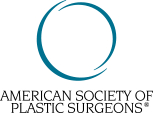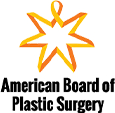Posted by Laurence Weider on February 20, 2018
Here is a primer for some of the most frequently asked questions regarding breast augmentation recovery.
Will the procedure be painful?
While everyone is unique, most of the women who undergo breast augmentation are pleasantly surprised that they don’t have much pain after surgery. Most describe tightness and some discomfort, however. We usually prescribe a painkiller and a muscle relaxer, but after 3-7 days most women can switch to over-the-counter pain medication. Some factors such as implant size and skin tightness will influence the level of pain and the duration of the discomfort and tightness. If the individual’s skin is tight, which is more common in younger women who have not had children, it will take longer for the breasts to soften up. By about three weeks, most women feel like they are back to “feeling like themselves.”
When can I go back to work, back to school and/or take care of my kids?
Typically, within three to five days, non-strenuous activities can be resumed. So, in the case of an individual who has a job that does not require strenuous activity such as heavy lifting, most women can go back to work after five days. If you have a toddler, then it would be a good idea to have help for the first seven to ten days. Again, everyone’s experience is a little different, but these are time frames based on the typical patient.
How should I sleep after breast augmentation?
For the first few nights, I recommend that you sleep on you back with your head elevated. This can be achieved with pillows or by sleeping in a recliner. After about three days, you don’t need to sleep with your head elevated any more, but I would still recommend sleeping on your back for the first week. After that, if it feels comfortable, you can sleep on your side. I wouldn’t recommend sleeping on your stomach for several weeks.
When can I resume exercise?
We have many athletic patients, and this is a common question. This is the schedule I recommend, but it depends on how you are feeling during your recovery as well. For the first few days after surgery, I ask patients to take it easy. By that I mean they should be getting up and walking around but not doing any exercise. After about 4-5 days, it is ok to go on a long walk (10-20 minutes) if you feel like it. Alternatively, if you would rather walk on a treadmill, that is fine as well. About 2-3 weeks after surgery, you can resume some light exercise. For example, riding a stationary bicycle or a spinning bike or using an elliptical trainer should be fine. In addition, doing lower body weight training is ok. The key is not to do any impact sports such as running as well as avoiding use of your pectoralis (chest) muscles. After six weeks you can resume running if you wish to. We recommend that runners wear two sports bras for three months or even longer. This protocol is a general guideline and will need to be modified somewhat for some people. In addition, it is important to see how you feel when doing an activity. If it hurts, it is best to give it some more time before resuming that activity.
What about lifting? When can I lift my baby?
I recommend that women don’t lift more about 5-6 pounds for the first few days. By comparison, a gallon of water weighs just over 8 pounds. Then you can gradually increase how much you lift as the days and weeks go by. It will be about one to two weeks before you can lift your child up depending on what he or she weighs. However, it is ok to have someone else place your child onto your lap after a few days. Once you do resume lifting your child up, it is best to bend down low using your knees and not your back. Then hold your child against your hip to help support his or her weight as you stand up.
Will the procedure result in breast numbness (loss of feeling)?
Most women have some numbness after breast implant surgery. However, this is usually temporary. The numbness is due to the stretching of the nerves in the breasts. However, normal feeling typically returns after six to eight weeks. Many patients will note hypersensitivity in the first few weeks after breast augmentation. This sensitivity will also go away after about three to six weeks. It should be noted that the risk of any permanent numbness increases if very large implants are chosen.
Breast Feeding
Most women who undergo breast implant surgery can breastfeed in the future if they wish to. I typically use an incision in the fold below the breasts (Inframammary fold) in order to place implants. One of the benefits of this incision is that there are no incisions near the nipple that could potentially disrupt milk ducts or nerves near the nipples. The inframammary incision means that almost no breast tissue needs to be cut in order to place the breast implants.
What are these weird sounds I hear coming from my chest?
That is a fairly common question. Many women hear odd sounds such as sloshing, squeaking or creaking coming from their chests. This is nothing to worry about. The sounds are due to the fact that there is some air and fluid in the pocket but outside the implant. It sloshes around and makes some odd noises that can be alarming. You can rest assured that by about six weeks, that air and fluid will be safely absorbed by the body and the odd sounds will go away.
Implant replacement after 10 years
It is a commonly held belief that breast implants should be replaced every ten years. However, with current implants, that isn’t the case. I advise my patients that if their implants are intact and they are still happy with their appearance, there is no need to change out the implants after ten years. That being said, silicone gel filled implants should be monitored periodically for leaks. This is usually done with an MRI, but mammograms or ultrasound may also detect implant rupture.
Scarring and treatment
At the time of surgery, we take all measures we can to minimize scarring. This includes inconspicuous incision placement and meticulous incision closure, In addition, sterl strips or skin adhesive are placed after the incisions are closed. Two weeks after surgery, the experienced staff at Weider Plastic Surgery will explain the best methods and products to use to get the least visible scars.
Dr. Weider, a native of Southern California, is a Board-Certified Plastic Surgeon who has maintained a private practice in Dallas, TX since 1999. After attending Stanford University, he obtained his medical degree (M.D.) from Baylor College of Medicine in Houston. He then completed a one year surgical internship in Los Angeles at Harbor-UCLA Medical Center, followed by a four year general surgery residency in Dallas at Methodist Medical Center, and a two year plastic surgery fellowship in Cleveland at Case Western Reserve University.







